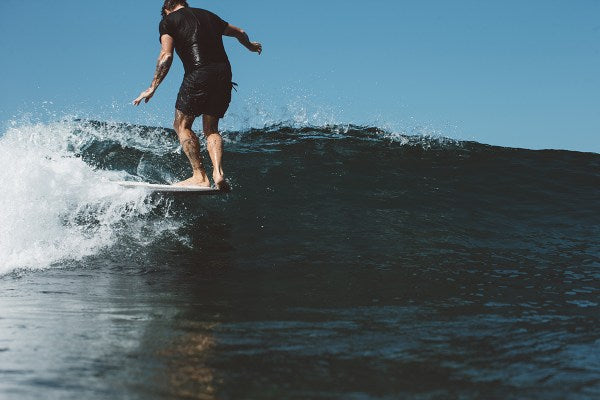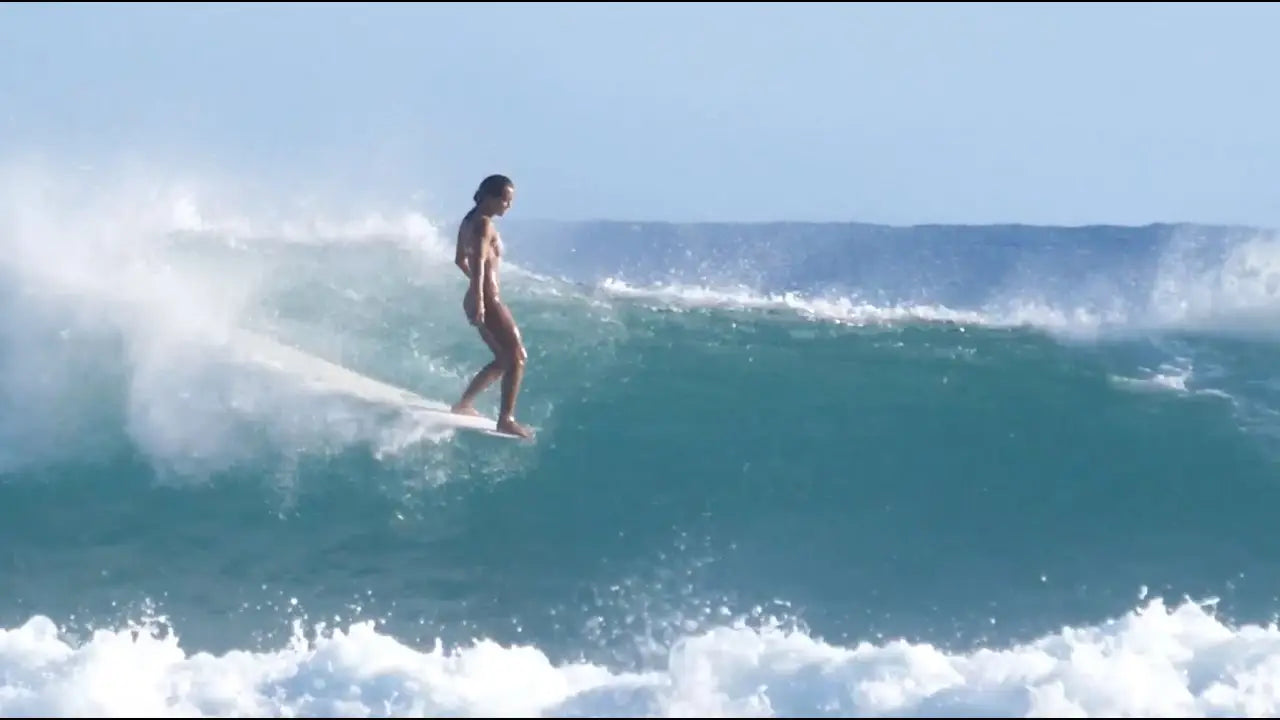The Difference Between High-Performance Longboards and Logs
The Difference Between High-Performance Longboards and Logs
While longboards are generally pretty easy to identify—they are wide, high in volume, and typically around 8'6" or longer—there are subcategories of longboards that are harder for the uninitiated to identify, ranging from high-performance longboards and noseriders to gliders and oversized fish. For the most part, however, longboards can be broken into two main groups: high-pro and logs.

High-performance longboards use modern concepts such as relatively thin rails, hard edges, lightweight foam and glass, relatively low volume, rocker, and thruster or 2+1 fin setups to facilitate aggressive, shortboard style ripping, but on longer boards that can also technically support noserides. These longboards were quite popular in the 1990s, and up until a couple of years ago dominated the competitive circuit and the longboard world tour. Adept surfers put high-pro longboards through the paces, doing vertical snaps, 360s, spinners, airs, and even barrel rides on them, while also sneaking up to the front of the board for the occasional noseride. But the lightweight, highly rockered boards come at a price—they lack the classic glide and the ability to support extended noserides that logs provide. Modern versions of high-performance longboards include Harley Ingleby’s HIHP and Taylor Jensen’s TJ Pro.

Youtube review here.
There are a wide variety of logs, but generally speaking they are heavily glassed, single-fin longboards with soft rails throughout and no leash plug. Traditional noseriders are the classic log shape, and often feature 50/50 or 60/40 rails all the way through the tail, a lot of tail rocker but very little in the nose, a large single fin, and concave under the nose. All of these characteristics help slow the board down in the pocket so that it can be noseridden longer and more easily. Logs tend to emphasize noseriding and trimming at the expense of fast turns, and are generally more difficult for beginning surfers to ride. While most surfboards—including high-performance longboards—are built for speed, logs are literally built for the exact opposite, as the goal is to be able to noseride as long as possible without outrunning the pocket. Examples of popular log shapes on the market today include CJ Nelson’s Sprout, Kai Sallas’ Waikiki, and Ben Skinner’s Cherry Picker. Many people consider Bing’s Nuuhiwa Noserider from the early 1960s to be the best log ever shaped.

Another popular type of logs is the “pig” or “involvement log,” which was a popular Australian design in the 1960s. Featuring wider hips and a drawn in nose, a pig is faster and easier to maneuver than your typical, popsicle-stick-outline noserider, but is still able to support extended noserides and very much a retro design. The new Apex from CJ Nelson is an example of an involvement log with a touch of modern twist.

In general, high-performance longboards are considered to be “modern longboards,” while logs are often considered to be “retro.” That being said, many of the world’s best longboarders and longboard shapers are creating high-tech versions of logs that are futuristic in their construction, even though the type of surfing that they support is considered to be “traditional.” Ultimately, surfing is supposed to be fun, so if you find it fun to trim and ride the nose, then a log might be for you, but if you want to shred, then a lightweight, high-performance longboard might be the answer.
More Longboard Guides:
📌How to Paddle a Longboard and Navigate Waves
📌The Ultimate Guide on How To Choose The Right Fin Size For Longboards
📌Understanding Fin Options for Longboards